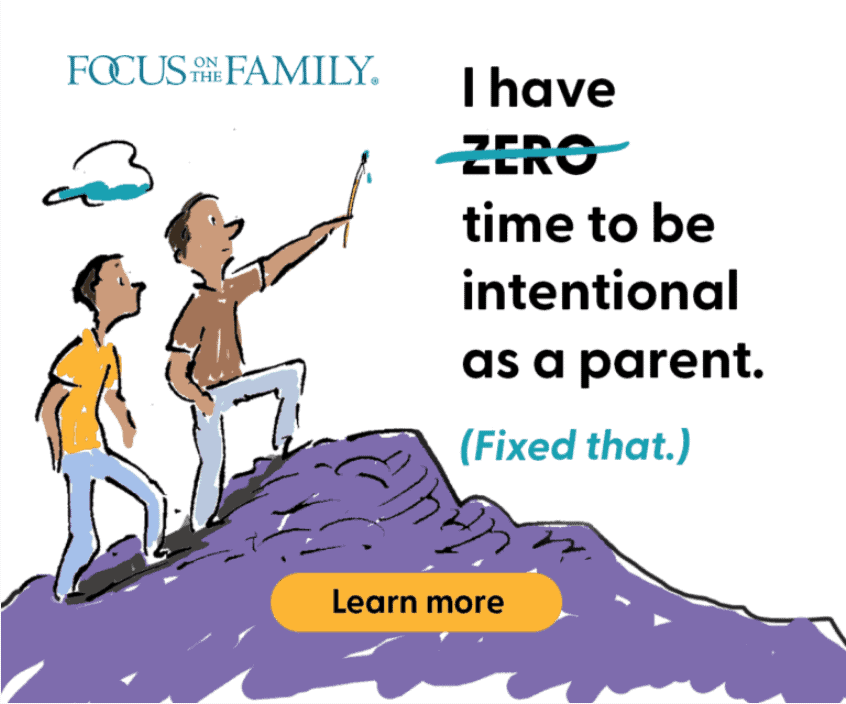There’s a great deal of confusion among people about what the actual divorce rate in the United States is today.
Some say it’s around 50%. Others contend it’s nowhere close. Some simply hold that this statistic stems from a terrible misunderstanding of the data. No one but a small handful of family scholars really seems sure just what the current rate of divorce is. But it doesn’t need to be this way.
It is important to know the actual divorce rate so that we have a sober understanding of how bad the story is regarding marital longevity. Or is the story not really that bad? Is there reason for hope?
The true divorce rate is both a good and bad news story. And in some important regards, there is some remarkably good news that is unknown to most people, but should be part of the discussion. Getting a complete picture of what the divorce rate actually is requires recognizing four different ways leading family scholars measure the prevalence of divorce.
Three primary measurements are used, as well as a fourth, not as commonly utilized, method. They are referred to below using the same terms and definitions that scholars do.
1. Cohort Measure Rate
This means is what gives us the “40-50%” rate. It looks at a large group of people marrying in a particular measure of time (a cohort) relative to general life-tables and then provides a sophisticated estimation of one’s general risk of divorce. As Scott Stanley, a leading scholar on this topic, explains:
The 40-50% number comes from a detailed analysis of various population demographics, including ages, life span projections, etc. It represents a sophisticated projection of a calculated risk, much like projected life span for babies born today. … [It] is a valid projection under current conditions and it pertains to new, first time marriages.
This number is typically and correctly placed in the 40-50% range. Some scholars find good reason for the 50% figure, while others believe it’s in the 44-45% range. We use the latter figure at Focus on the Family as we deem it more precise.
Pro: It is the measure most scholars use and is most widely known, giving the larger picture of the overall marital lifetime expectation.
Con: It doesn’t give an objective number of actual divorces. But This Figure Applies to No One Actually How can a figure be correct, but not actually apply to anyone?
But This Figure Applies to No One Actually
How can a figure be correct, but not actually apply to anyone?
The reason is that various personal life factors impact this general number, for good and bad, in significant ways. Here are but a few of these major factors:
- Cohabitors in general have a 50-80% higher likelihood of divorce after marriage than non-cohabitors.
- Unfortunately, the general divorce risk for African-Americans is 1.5 times higher than for Whites.
- Only 36% of college graduates who marry will ever divorce.
- Those who marry after 18 years of age have a reduced divorce risk of 24%
- Coming from an intact family reduces divorce risk by 14%.
- Having an overall annual household income of $50k means a 30% lower divorce risk.
- Those with a strong common faith have a 35% lower risk of divorce. Couples who attend church weekly are 47% less likely to divorce. However, divorce rates among nominal Christians are equal to the general population.
- Having one’s first child after marriage reduces divorce risk by a range of 24% – 66%.
- A marriage where only one partner smokes regularly increases their divorce risk by upwards of 75%
- Marrying as non-virgins is associated with “considerably higher” risk of divorce and “dramatically more unstable first marriages” as scholars state it.
- Marriages in which the wife wants children, but the husband does not face a 50% higher risk of divorce.
- Marriages with a significant age difference between partners – particularly younger husband or much older husband – have nearly a 50% greater likelihood of divorce than those of similar ages.
So while the 40-50% projected rate of divorce risk is true and reliable, there are important personal characteristics that put everyone at different risk, for good and bad. Those with a number of these positive factors in their corner can be expected to have an overall divorce risk of zero! That is very good news indeed.
2. Crude Divorce Rate
This is not a divorce rate that tells off-color jokes, but is the actual number of divorces per 1,000 people in a population.
This crude divorce rate is currently 3.6 divorces for every 1,000 people in the U.S.
The age adjusted crude divorce rate is currently 13 divorces for every 1,000 people age 15 and older.
Pro: It provides the largest measurement/picture of divorce prevalence in a population.
Con: It’s imprecise because it includes all people, children, singles, and elderly couples who are not at risk for divorce.
3. Refined Divorce Rate
This is not a divorce rate that happens to know which is the salad fork, but it’s the actual number of divorces per 1,000 married women. Like the crude rate, it is an annual rate.
The refined divorce rate indicates that currently 19 of every 1,000 marriages ends in divorce.
Paul Amato, one of a small handful of leading scholars studying such things, adds:
An advantage of the refined divorce rate is that it has a clear interpretation. That is, dividing the rate by 10 yields the percentage of marriages that end in divorce every year. Currently, that number is about 2%.
So, 2% of all marriages in the United States end in divorce annually.
Pro: This is a very precise annual number that gives the rate of divorce as a subset of those actually married, the proper comparison.
Con: Doesn’t give the bigger, longitudinal number of divorces.
4. Percent Ever Divorced – Not a Rate
A fourth, lesser used, measure is the percentage of ever-divorced.
Currently, 22% of women are ever divorced, while 21% of men are.
Of the currently divorced, 11% of women are and 9% of men are.
Pro: It is what it is, straight-forward: It shows what percentage of adults are actually divorced at one time.
Con: As it includes everyone, it includes those who married badly and young, but divorced and are now in a strong, enduring subsequent marriage of many decades. It also fluctuates relative to general marriage rate.
Conclusion
Each of these very diverse numbers is the correct answer to the question “What is the divorce rate in the United States?” Obviously one must ask, “By which measure do you want that rate?”
Some statistics seem to tell a more positive story than others, but they are all seeking to answer the same question about divorce, just from very different angles.
The best and most encouraging news is that many people today actually have a very small risk of divorce in their future.
- Paul Amato, “Interpreting Divorce Rates, Marriage Rates and Data on the Percentages of Children with Single Parents,” A Report of the National Healthy Marriage Resource Center, 2010 ↩
- Amato, 2010, p. 4. ↩
- Wendy Manning, Pamela Smock and Debarun Majumdar, “The Relative Stability of Cohabiting and Marital Unions for Children,” Population Research and Policy Review, 23 (2004): 135-159; Anita Joes, K. Daniel O’Leary and Anne Moyer, “Does Premarital Cohabitation Predict Subsequent Marital Stability and Marital Quality?: A Meta-Analysis,” Journal of Marriage and Family 72 (2010) 105-116. ↩
- Jennifer Roebuck Bulanda and Susan L. Brown, “Race-Ethnic Differences in Marital Quality and Divorce,” Center for Family and Demographic Research, Bowling Green State University, Work Paper Series 06-08, p.26. ↩
- W. Bradford Wilcox, editor. The State of Our Unions 2012, The National Marriage Project, University of Virginia, 2013. p. 74 ↩
- 6 Norval D. Glenn, Jeremy E. Ueker, Robert W.B. Love Jr., “Later First Marriage and Martial Success,” Social Science Research 39 (2010) 787-800, p. 787. ↩
- Wilcox, 2013. p. 74. ↩
- Wilcox, 2013. p. 74. ↩
- Margaret L. Vaaler, Christopher G. Ellison and Daniel A. Powers, “Religious Influence on the Risk of Marital Dissolution,” Journal of Marriage and Family, 71 (2009): 917-934; Tyler J. VanderWeele, “Religious Service Attendance, Marriage, and Health,” Institute for Family Studies, November 29, 2016. ↩
- Rebecca Kippen, Bruce Chapman, Peng Yu and Kiatanantha Lounkaew, “What’s Love Got to Do With It? Homogamy and Dyadic Approaches to Understanding Marital Instability,” Journal of Population Research, 30 (2013) 213-247; Wilcox , 2013, p. 74. ↩
- Kippen, et al., 2013. ↩
- Jay Teachman, “Premarital Sex, Premarital Cohabitation and The Risk of Subsequent Marital Dissolution Among Women,” Journal of Marriage and Family 65 (2003) 444-455; Joan R. Kahn and Kathryn A. London, “Premarital Sex and the Risk of Divorce,” Journal of Marriage and the Family, 53 (1991): 845-855; Edward O. Laumann et al., The Social Organization of Sexuality: Sexual Practices in the United States, (Chicago: University of Chicago Press, 1994), p. 503; Timothy B. Heaton, “Factors Contributing to Increasing Marital Stability in the United States,” Journal of Family Issues, 23 (2002): 392-409; Anthony Paik, “Adolescent Sexuality and Risk of Marital Dissolution,” Journal of Marriage and Family 73 (2011): 472-485. ↩
- Kippen, et al., 2013. ↩
- Kippen, et al., 2013 ↩
- Amato, 2010, p. 3. ↩
- Amato, 2010, p. 3 ↩
- Amato, 2010, p. 3 ↩
- Rose M. Kreider and Renee Ellis, “Number, Timing and Duration of Marriages and Divorces: 2009,’ Current Population Reports P-70-125, U.S. Census Bureau, May 2011, Table 6, page 16. ↩





















